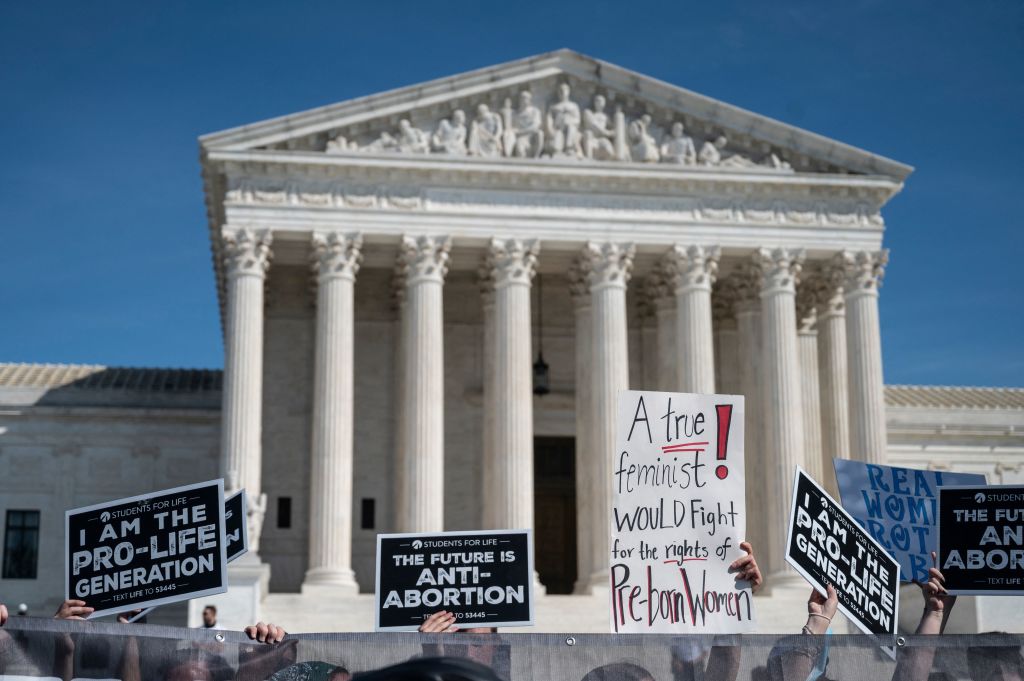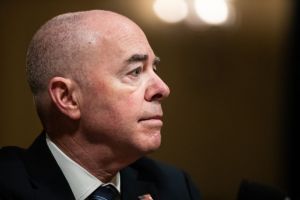Nearly 50 years after Roe v. Wade unleashed a constitutional right to abortion and redefined modern American politics, Dobbs v. Jackson Women’s Health Organization has arrived as its foil.
In a term already packed with high-profile cases ranging from gun rights to religious liberty to the death penalty, the Supreme Court has announced it will hear arguments in Dobbs on December 1. In doing so, the Court has opened the door to overturning Roe and its sister case, Casey v. Planned Parenthood, sending the question of legal abortion back to the states.
The case itself centers on a 2018 Mississippi law that, with limited exceptions, bars abortions after the 15th week of pregnancy. Upon passage of the law, Jackson Women’s Health Organization, the state’s only licensed abortion clinic, went to court to challenge the law’s constitutionality. Both a federal district court and the US Court of Appeals for the Fifth Circuit agreed with the clinic, reasoning that Supreme Court precedent disallows bans on ‘pre-viability’ abortions. (Viability is the point at which a baby is considered able to survive outside the womb.)
While abortion cases post-Roe have trickled up to the Supreme Court on rare occasions, none have presented the clear and fundamental question that Dobbs now brings: whether or not bans on pre-viability elective abortions violate the Constitution.
In ruling on this case, the Court will have the opportunity to overturn both Roe and Casey, which together form the architecture for a constitutional entitlement to abortion. And it is clear that the state of Mississippi intends to argue for the Supreme Court to do exactly that.
In her brief to the court, Mississippi Attorney General Lynn Fitch called Roe and Casey ‘at odds with the straightforward, constitutionally grounded answer to the question presented [in this case]. So the question becomes whether this Court should overrule those decisions. It should.’
The conservative legal movement has long pointed to the constitutional feebleness of these cases as at least one reason for their dismissal. Just last year in a dissent issued in June Medical Services v. Russo, Justice Clarence Thomas pointed to Roe and Casey as having ‘created the right to abortion out of whole cloth, without a shred of support from the Constitution’s text.’
Even proponents of legal abortion have acknowledged Roe’s status as constitutionally dubious. Writing shortly after the decision was handed down in 1973, pro-abortion legal scholar John Hart Ely called Roe ‘bad because it is bad constitutional law, or rather because it is not constitutional law and gives almost no sense of an obligation to try to be.’ Judge Richard Posner has labeled parts of the ruling ‘sophomoric.’ The late Justice Ruth Bader Ginsburg thought the ruling was far too broad.
It was up to a determined plurality in Casey, as Notre Dame law professor Sherif Girgis has pointed out, to attempt to salvage the judicially embarrassing mess that Roe created. Yet Justice Antonin Scalia still identified Casey as an instance of judges making ‘raw judicial policy choices concerning what is “appropriate” abortion legislation under the banner of applying the law.’
Scalia understood that the larger conflict the case presented was between judicial fiat and self-government, a tension which is also at issue now in Dobbs. That is, surrounding the legal question of Mississippi’s law is a broader question of state sovereignty and the right of a self-governing people to determine for themselves questions at the intersection of morality, theology, public policy, and medicine.
Public polling consistently shows that Americans favor significant restrictions on abortion, which may explain the dozens of elected state legislatures that have passed hundreds of laws to protect life. And as Attorney General Fitch persuasively argues in her brief to the Supreme Court, advances in science and medicine have overtaken Roe’s emphasis ‘viability’ as the defining point of the state’s interest in protecting unborn life. Not only has a baby ‘taken on “the human form” in all relevant respects by 12 weeks,’ she points out, but neonatal science has progressed considerably as to when an unborn baby can feel pain.
The trouble with entrusting these decisions to the courts is that it puts judges in the position of evaluating ever-changing scientific developments with final judgments that are difficult to amend once the scientific justification has progressed. More troubling, however, is that it makes judges the final arbiter of complex and contentious moral questions about the nature of human life — questions better left for a free people to determine for themselves.
If the Court were to agree in full with the state of Mississippi — that pre-viability abortions are indeed constitutional, thus striking down Roe and Casey — the question of abortion would return to state legislatures. The American people would be left to do what Sixth Circuit Judge Amul Thapar has argued courts cannot: reflect the will of their communities, create evidence-based rules with the exemptions they choose, update those laws as necessary, and, perhaps most importantly, express their pleasure or displeasure with the resolution at the ballot box.


















